It is easy for Port Wine lovers to miss some of the rich cultural and historical gems that Portugal has to offer when focused only on the wines. My first trip to Portugal was in 2006 on the For The Love Of Port Harvest Tour. The tour focused mainly on the two important wine-related areas - the coastal city of Porto and the Douro Valley. The former is known for its history as the exportation hub for the country’s Port wines and the latter as the location of the vineyards and Quintas (wine estates). This trip became a mostly-annual event for me, but it occurred to me that I had not very often ventured beyond Porto and the Douro Valley to explore other parts of the country.
In 2016, I resolved to spend some time after the conclusion of the Port Harvest Tour visiting a few places in Portugal that I’d never explored before. I connected with my dear friend Mario Ferreira (one of the FTLOP tour hosts and a member of our For The Love Of Port Staff) to get some suggestions on where I should go. Mario not only had a few suggestions but said he had been thinking about doing the same, and asked if I’d be interested in joining him. Our destinations: the Roman ruins at Conímbriga and the university town of Coimbra.
The morning after the Harvest Tour concluded, Mario picked me from the hotel and we set out for the hour-long drive from Porto to Conímbriga, a walled Roman settlement that is considered one of the best-preserved Roman cities in Portugal.
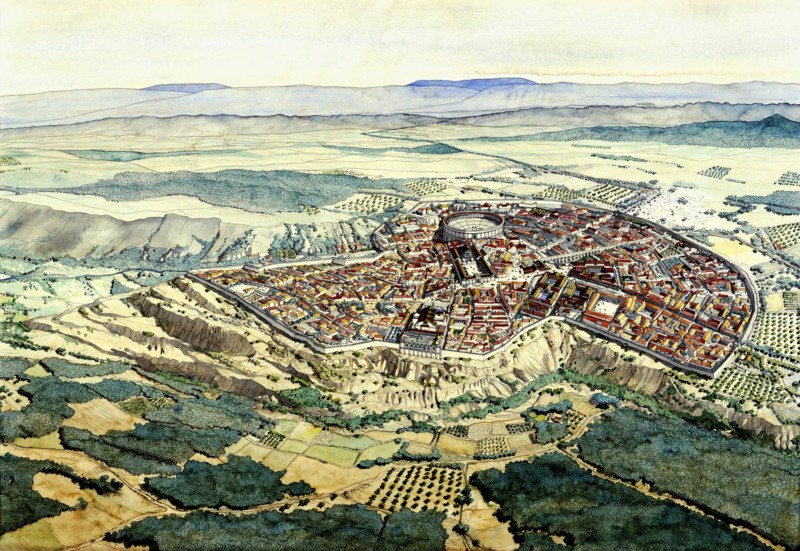
Photo Credit: Museu Monográfico de Conímbriga
Like many archeological sites in Portugal, Conimbriga is really layers of construction and growth over many centuries. Some of Conimbriga’s earliest layers date back to the first Iron Age in the 9th Century BC. It grew as a settlement when the Romans arrived in the 2nd Century BC, its strategic importance derived from its location between the key cities of Lisbon and Braga. Barbarian invasions forced the residents to demolish some of the dwellings and repurpose the stones to build a defensive wall around the city. The efforts were in vain, as the city fell in 468 AD to Germanic Suebi forces. Fortunately for us, much of the city’s structures appear to have been spared destruction, likely because the residents abandoned the city and fled to nearby Coimbra as the conquering forces approached. Here, you can find ruins of multi-story houses (insulae), three baths, a 5,000 seat amphitheater, a basilica from the 5th-6th century, and the 1,500-meter city wall.
When we arrived at Conimbriga, Mario parked the car in the parking lot and we walked out into another century. Laid out before us was a blueprint of a Roman settlement, with low walls constructed to show where buildings once stood. I gazed for a few moments, trying to imagine what this place might have looked like 2,000 years ago.
As we entered the ruins, the most amazing thing for me was how well the mosaic tile floors were preserved. The intricate patterns and images constructed from tile pieces was something that I expected to see in Rome, not Portugal.
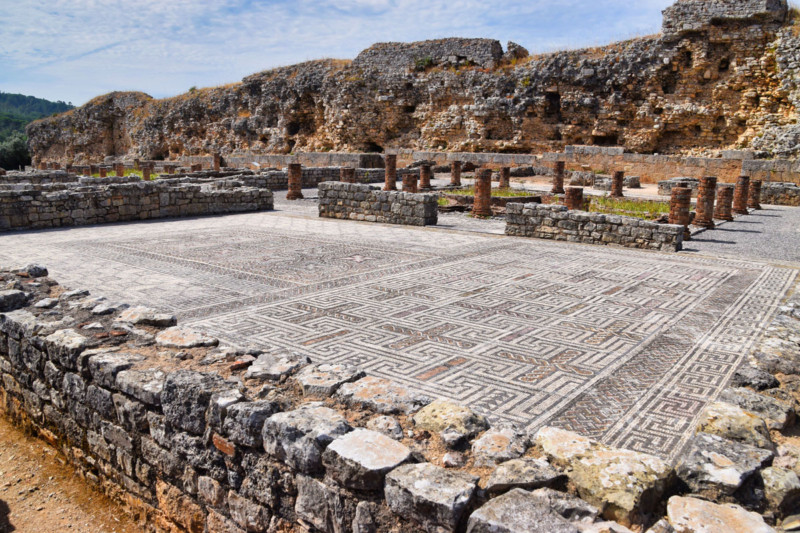
Mosiac Tile Floors at the Ruins in Conímbriga
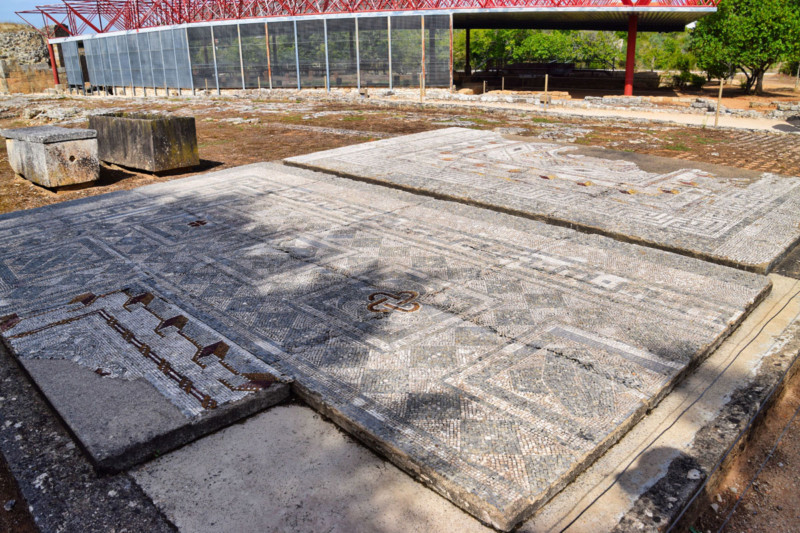
Recovered Mosaic Tile Floors at Conímbriga
These two mosaic fragments were discovered in 1899 during excavations conducted out by the Institute of Coimbra. One was recovered from the House of Cataber and the other is of unknown provenience. It is estimated that these were created sometime around 200 AD.
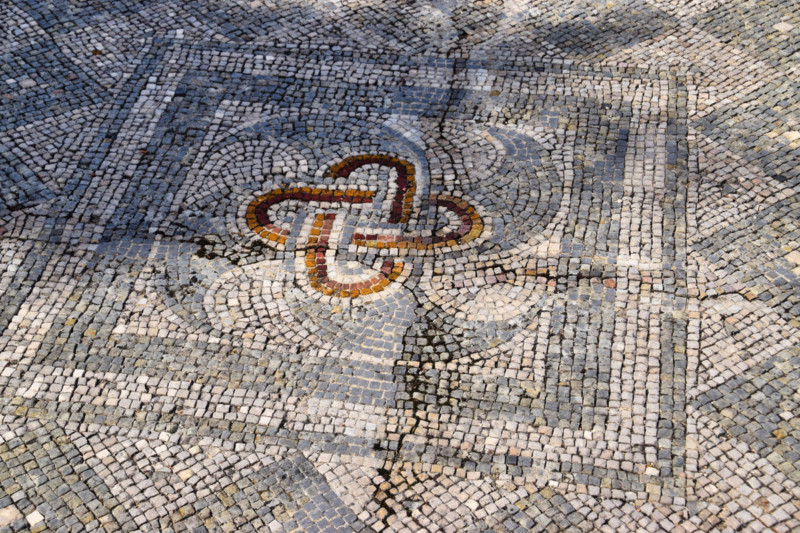
Details of the Mosiac Tile Floors at Conímbriga
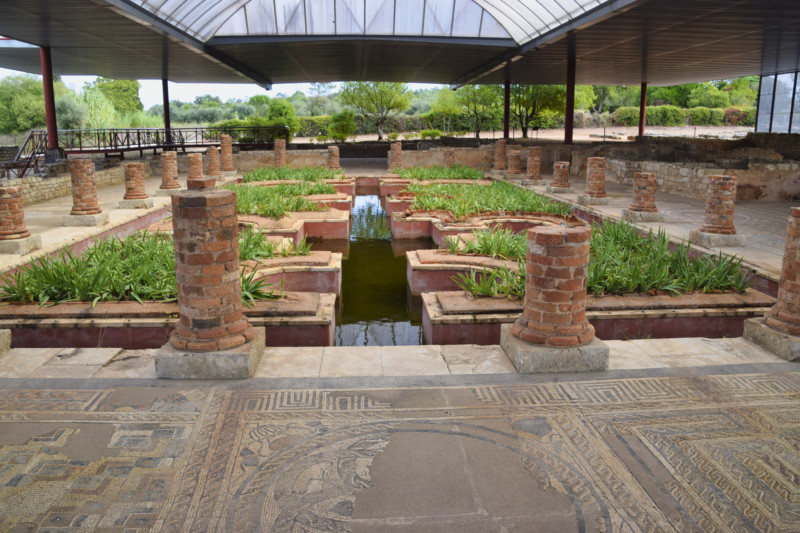
The 1st-century Casa dos Repuxos, a luxury residence with water gardens and mosaics representing the four seasons.
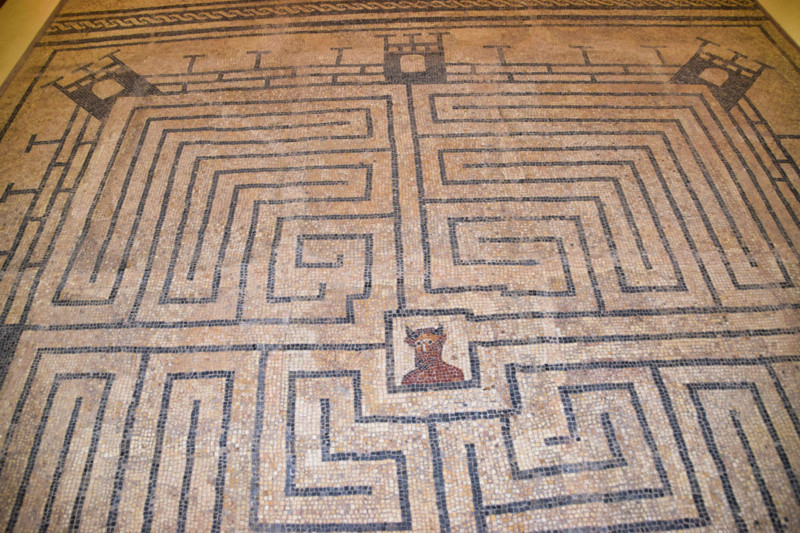
Tile Floors at Conímbriga
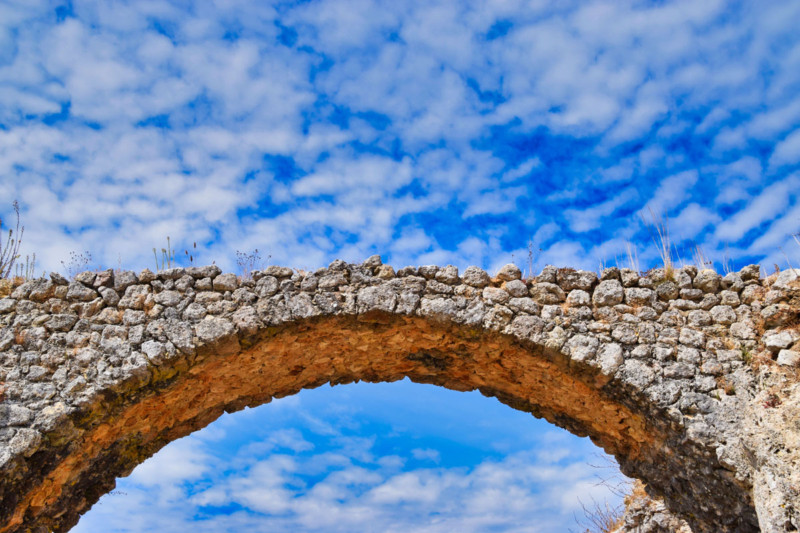
Stone Arches and Blue Skies at Conímbriga
Coimbra
After visiting Conimbriga, we hopped back in the car and headed about ten miles down the road to the university city of Coimbra. Coimbra is called “The city of students” and is home to the University of Coimbra, one of the oldest and largest universities in Portugal. It is a public university and was established in Lisbon in 1290. In 1537, it was relocated to Coimbra, and remains one of the oldest, continuously operating universities in the world.
When King João III moved the university to Coimbra in 1537, it was housed in the Alcaçova Palace, which was finally purchased from the Royal Family in 1597. The palace-like buildings give the university and the campus setting a sense of gravitas befitting its history.
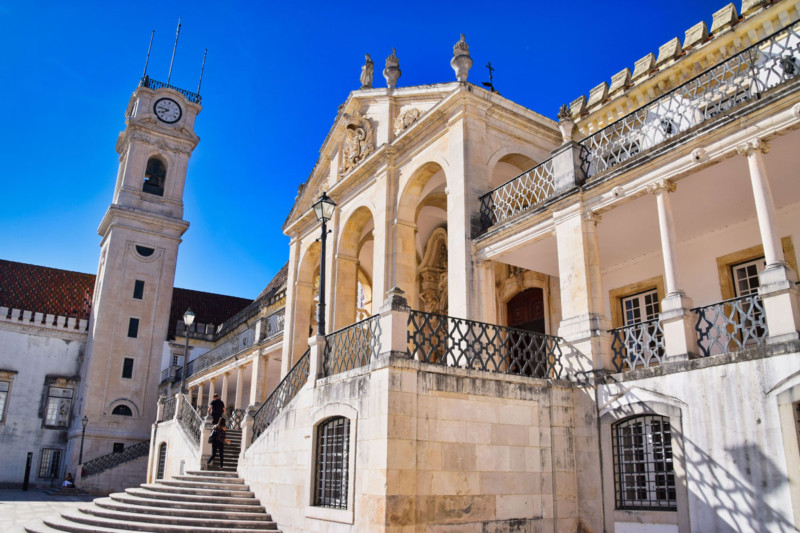
The Former Palace-Turned-University at the University of Coimbra
The university boasts impressive chapels, and an amazing library called the Joanine Library. The construction of this library was sponsored by King João V in 1717 and was designed in the Baroque style. Ornate wood shelves, railing, and ornamental details make this an awe-inspiring visit. The library houses over 250,000 books from the 15th to the 19th century, some hand-written.
The library is designed to help preserve these ancient books. Walls six feet thick and large teak doors help to maintain safe environmental conditions for the books. The shelves are all constructed of oak, a hardy wood that is resistant to boring insects. And finally, there is a colony of bats that live inside the walls of the library which come out at night and help to eat any insects that might damage or destroy the books.
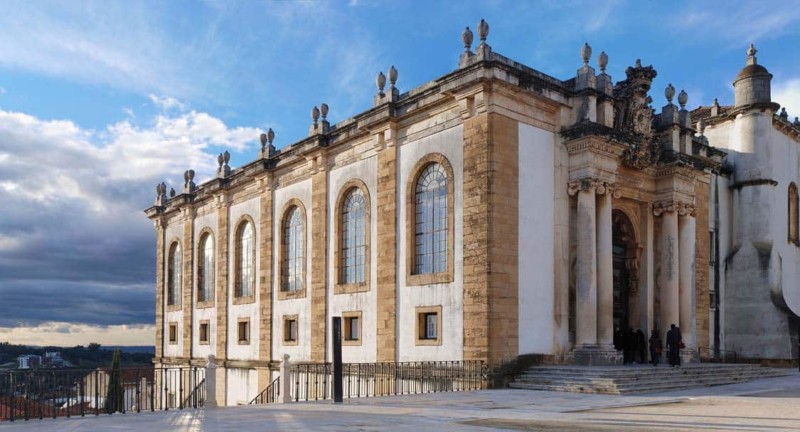
The Joanine Library at the University of Coimbra
Sadly, no photos were allowed inside, but a quick Google search for “Joanine Library Coimbra” will pull up some great photos of the interior.
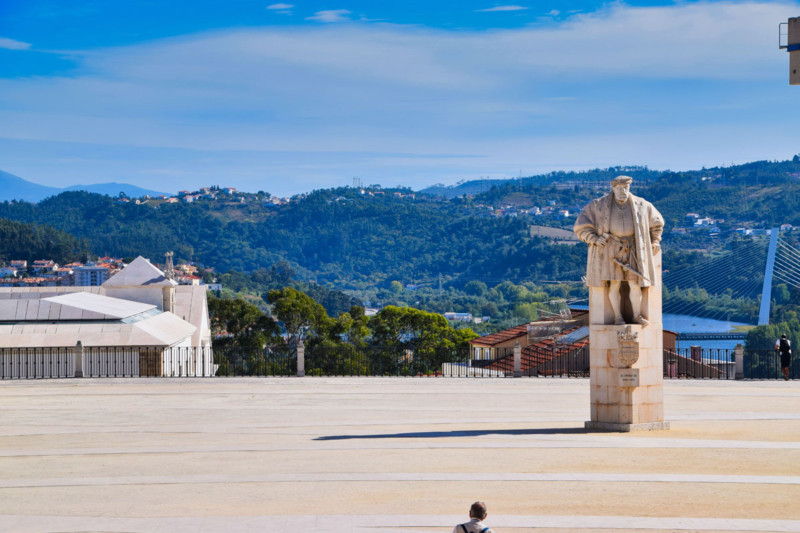
King João III, Who Based the University Permanently in Coimbra.
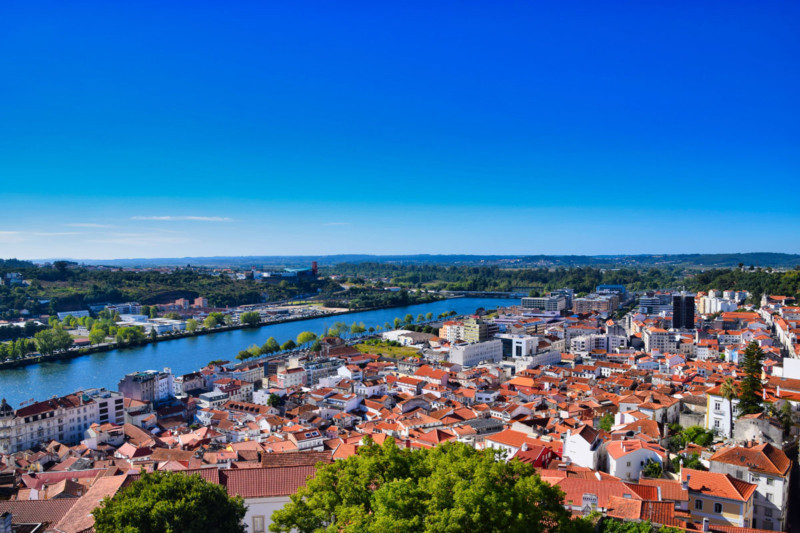
View of Coimbra from the University of Coimbra's tallest building
After touring the museum and walking around the campus, Mario and I said our goodbyes and I headed to the train station for the ride back to Porto, where I caught a flight the next morning back to the US, wrapping up my 2016 Portugal adventure.

Stewart Todd and Mario Ferreira at the University of Coimbra

Excellent piece. I really enjoying the reading. Thank you for bringing these memories back to my attention. Um Abraço Stewart.
I will alert Stewart that you left a comment here. This is also going into the upcoming newsletter.
I really enjoyed reading this as well. Thank you for going a bit beyond the wine here and delving into the history
Thanks, Lindsay! Since my first trip to the Douro in 2006, I really had a desire to see a little more of the country. It’s been fantastic getting beyond the Douro Valley to see things like that paleolithic stone carvings in the Coa Valley (featured in my Port Harvest Tour 2016 article), the ruins at Conímbriga, and the University at Coimbra. Such a rich culture and history.